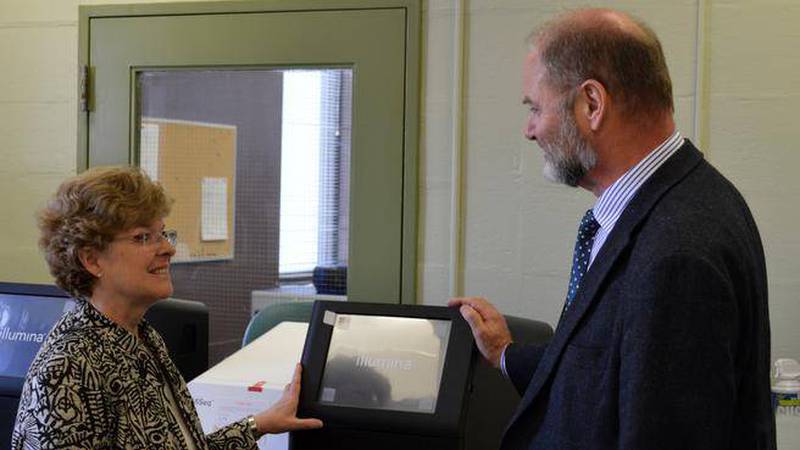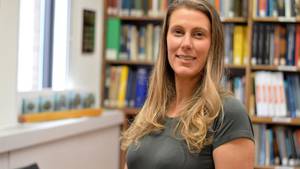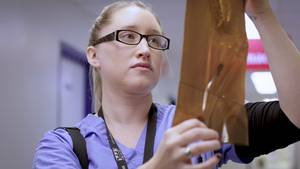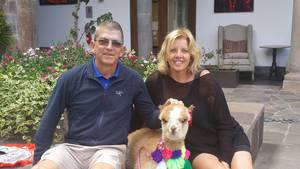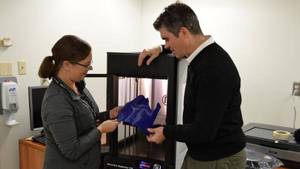A new DNA sequencing machine at the QEII will help unlock the mysteries of genetic diseases and find tailor-made treatments for patients.
This new equipment builds on the work of the Human Genome Project, which first mapped out the human genetic code in 2003.
It takes up about half the shelf space of the previous sequencer, but is thousands of times more potent. The old machine looks like a fax machine and uses matching 1990 technology, letting it study one DNA sample at a time. The new machine checks thousands of strands at once.
It compares the raw code of your DNA to a composite picture of normal human DNA coding created by the Human Genome Project. By spotting the discrepancies, the results teach physicians about your specific condition. It brings results in days, rather than weeks.
“It’s so small that it’s not very impressive to look at,” Dr. Wenda Greer laughs. As director of molecular diagnostics, she will use the little machine and she hopes it will impress with big results.
“We’re learning more and more about what genetic changes are associated with individual types of cancer. Some of the genetic changes we look for help us diagnose what particular subtype of cancer it is, depending on what tissue it’s in, and others give us information about how to predict the course of the disease within an individual,” she explains.
“Perhaps even more exciting is we’ve been starting to understand what genetic changes are actually driving or causing the disease. The drug companies are starting to develop drugs that are specifically targeting those changes.”
It could also spare some patients from chemotherapy if the DNA sequencing shows it wouldn’t help. Currently, doctors only know that after trying.
Dr. Godfrey Heathcote, district chief of Pathology and Laboratory Medicine, says the new DNA sequencer could make a dramatic difference. He points to the many cases of mothers in their 40s who develop lung cancer, despite never having smoked.
“To buy her a few extra years of life is actually very important,” he says. “It doesn’t mean she will be cured, but it may make her more comfortable for a certain period of time and give her a chance to get her life affairs in order and spend more time with her family — the things that really matter.”
The machine could also help the lab fight the growing problem of people becoming resistant to antibiotics. “The laboratory can investigate that by looking at the genes in different types of bacteria that are contributing or conferring the antibiotic resistance,” Dr. Heathcote says.
The new high-tech equipment was made possible thanks to a generous gift to the QEII Foundation from the J & W Murphy Foundation.
Dr. Heathcote says Dr. Greer and her team have made extraordinary progress over the last 25 years, and this machine will drive swifter advances. “As the department head, I’m really proud of what we’ve accomplished in the molecular biology lab,” he says. “We’re really excited.”

